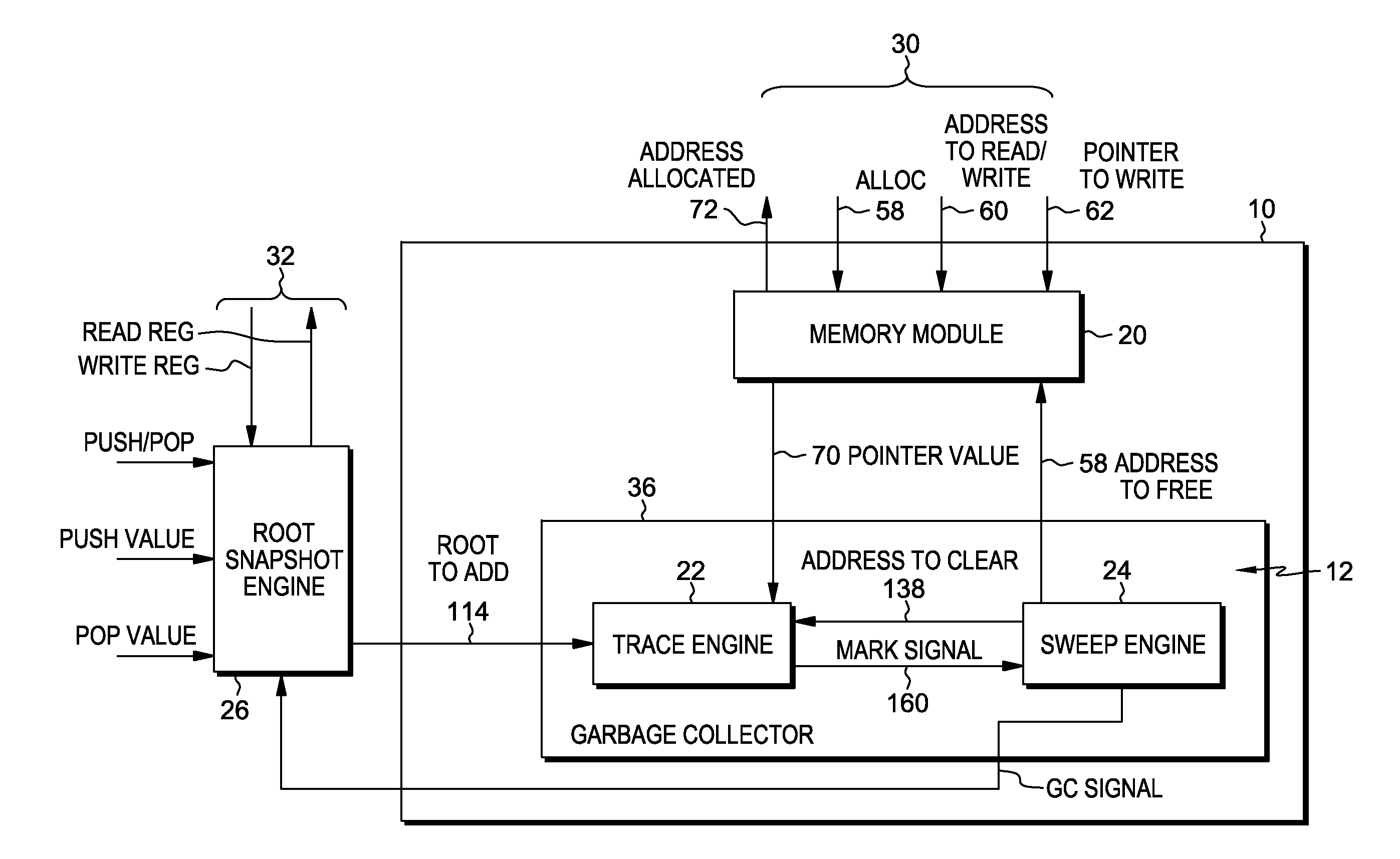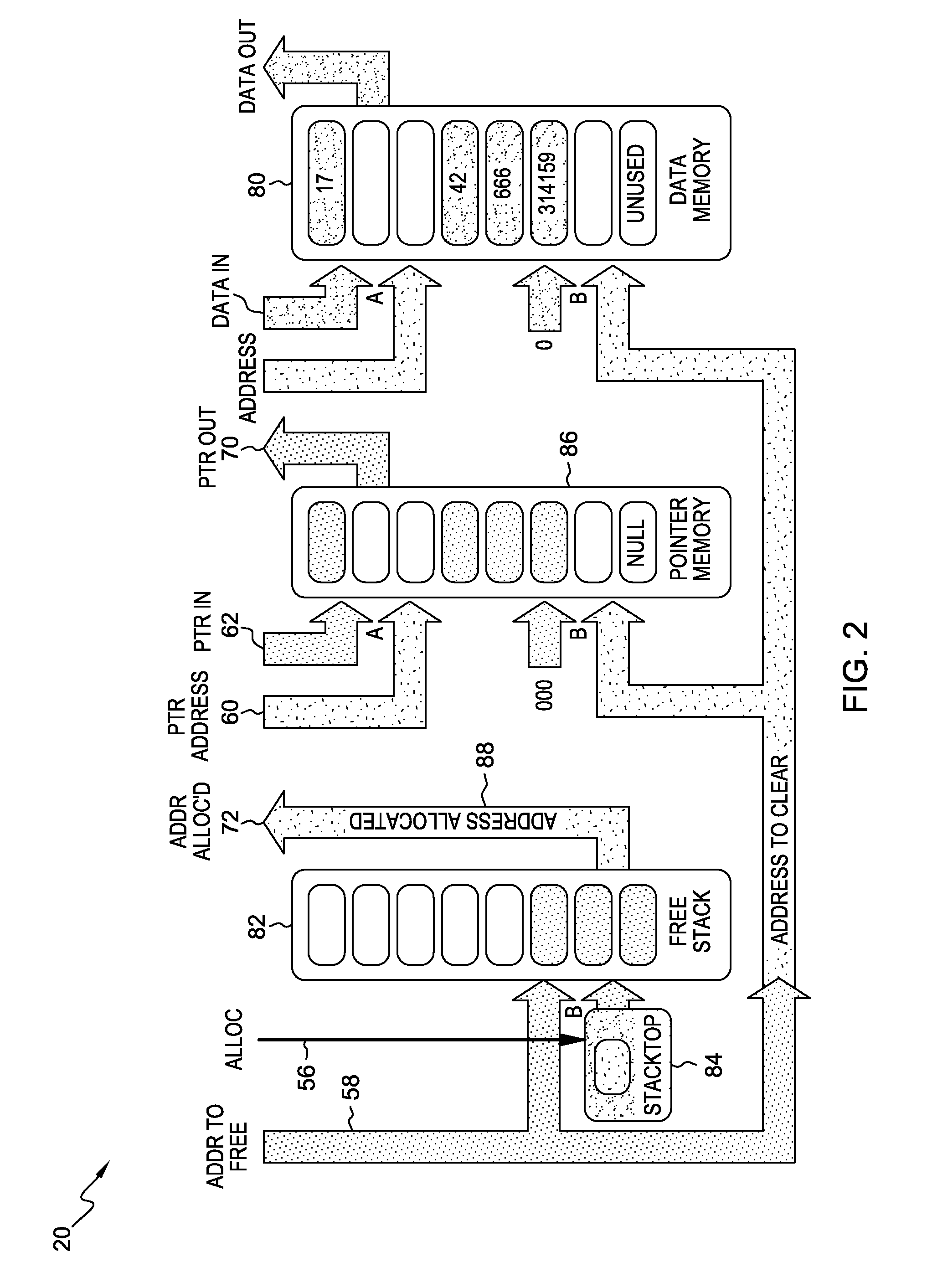Parallel garbage collection implemented in hardware
- Summary
- Abstract
- Description
- Claims
- Application Information
AI Technical Summary
Benefits of technology
Problems solved by technology
Method used
Image
Examples
Embodiment Construction
[0028]Garbage collection that is implemented in hardware has emerged as a plausible technique for improving programmability of hardware and raising its level of abstraction. Bacon et al. [D. F. Bacon, P. Cheng, and S. Shulka. And then there were none: A stall free real-time garbage collector for reconfigurable hardware. In PLDI, pp. 23-34, 2012] demonstrated the first garbage collector for on-chip memory in reconfigurable hardware, but the disclosed system only handles two pointers per object. In an embodiment of this invention, this design was generalized and improved to allow an arbitrary—but fixed—number of pointers per object. This allows the support of general data types. However, real programs may use many data types, with potentially very different sizes and pointer densities.
[0029]There are essentially two ways to support diverse data types. The first is to make the heap itself more flexible, with variable object sizes, byte-addressability, and so on. However, such a design ...
PUM
 Login to View More
Login to View More Abstract
Description
Claims
Application Information
 Login to View More
Login to View More - R&D
- Intellectual Property
- Life Sciences
- Materials
- Tech Scout
- Unparalleled Data Quality
- Higher Quality Content
- 60% Fewer Hallucinations
Browse by: Latest US Patents, China's latest patents, Technical Efficacy Thesaurus, Application Domain, Technology Topic, Popular Technical Reports.
© 2025 PatSnap. All rights reserved.Legal|Privacy policy|Modern Slavery Act Transparency Statement|Sitemap|About US| Contact US: help@patsnap.com



